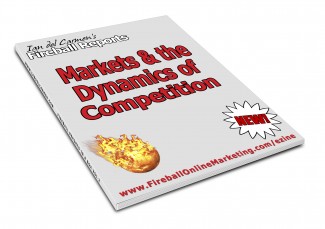Markets The Dynamics Of Competition Resale Rights Ebook
6 $
Sample Content Preview
Today marketing is not the same as it was in the ‘60s or ‘70s, because there are enough products to satisfy customer’s needs. In fact customers are “hypersatisfied”! Companies have segmented the market until it has become almost too small to service profitably.
Distribution is now largely in the hands of giant corporations such as Wal-Mart and Costco. There are more brands and fewer producers, products “life” have been shortened, and it’s cheaper to replace than to repair – all complicating the process further. Marketing has always started with identifying the needs of your customer, but many companies are now focusing on the product. They focus on what category it falls into, and then what sub-category (for instance pudding and then what flavors). By focusing on the product, companies then focus on who’ll use the product, and those considered “not using” are excluded from the picture. In doing this, you’ve just given your competitor a target market.
You may have captured 75% of your “user market” because you have a USP (unique selling position) i.e.; more flavors, more convenient packaging, longer shelf life, etc. But why can’t YOU also take care of the other 25% instead of your competitor?
To do that, requires a new way of thinking known as “Lateral Marketing”. Stop thinking about how you can keep the 75% in love with your product (Vertical Marketing), think about drawing in the 25% of the market that wasn’t your customer. This is done by innovative thinking. This may be seen as further “segmenting” the market-place, but at the same time it’s making it bigger.
Let’s say you sell soap. You’ve captured 75% of your market because of some formulary development that makes more suds with less product. The 25% that your competition is trying to capture would rather spend less for soap, than use less. Your method of also capturing that 25% is to start thinking “innovation” and not different product.
Lateral Marketing works within the original category of product and complements it, not competes with it. You could come up with soap with more bleach, with less foam, fragrance free, with more foam. You can innovate by size – selling in large economy packs, selling in individual packs, and do this without ever changing the formula of the product. This type of marketing works best for mature markets with no growth (after all, what new uses can you come up with for soap). It also can create markets from scratch, requires greater resources, and may redefine your company’s mission and business focus.
Other Details
– 1 Ebook (PDF), 7 Pages
– 1 Software (EXE)
– 1 Ecover (JPG)
– Year Released/Circulated: 2008
– File Size: 1,072 KB











